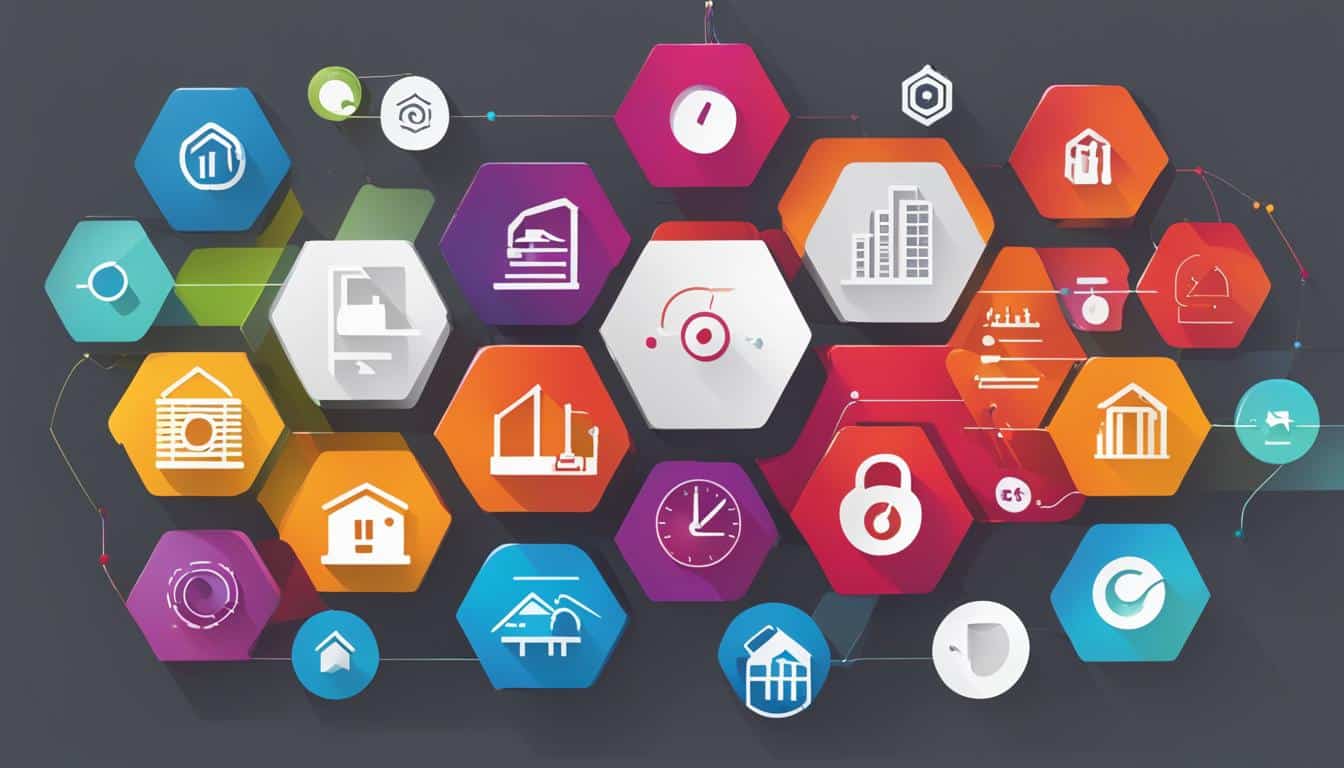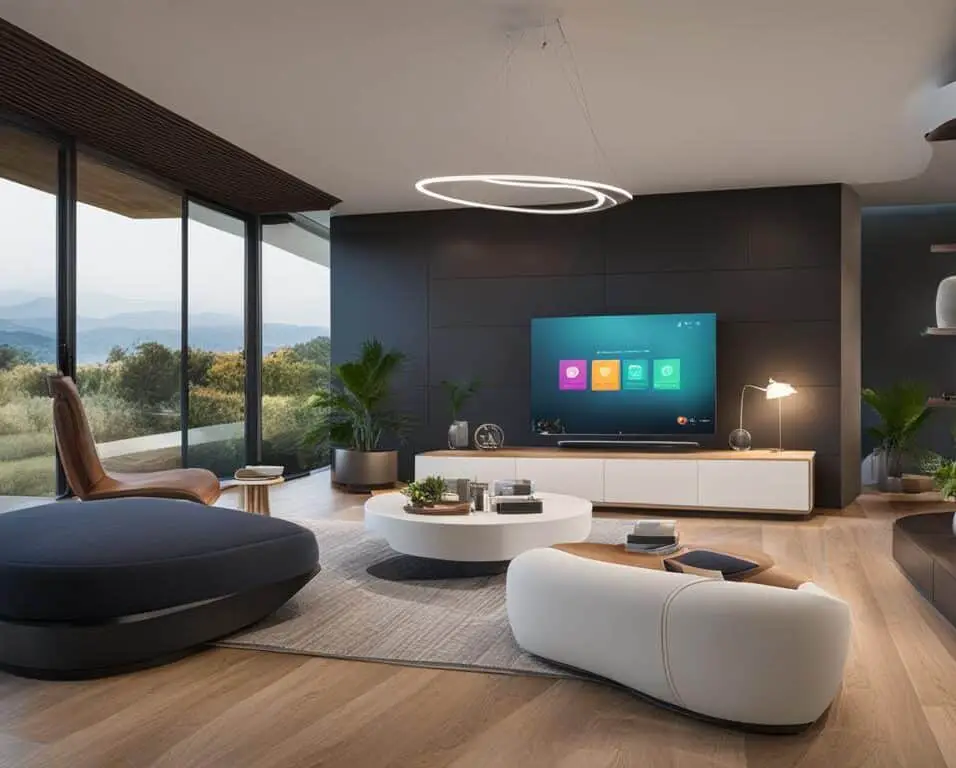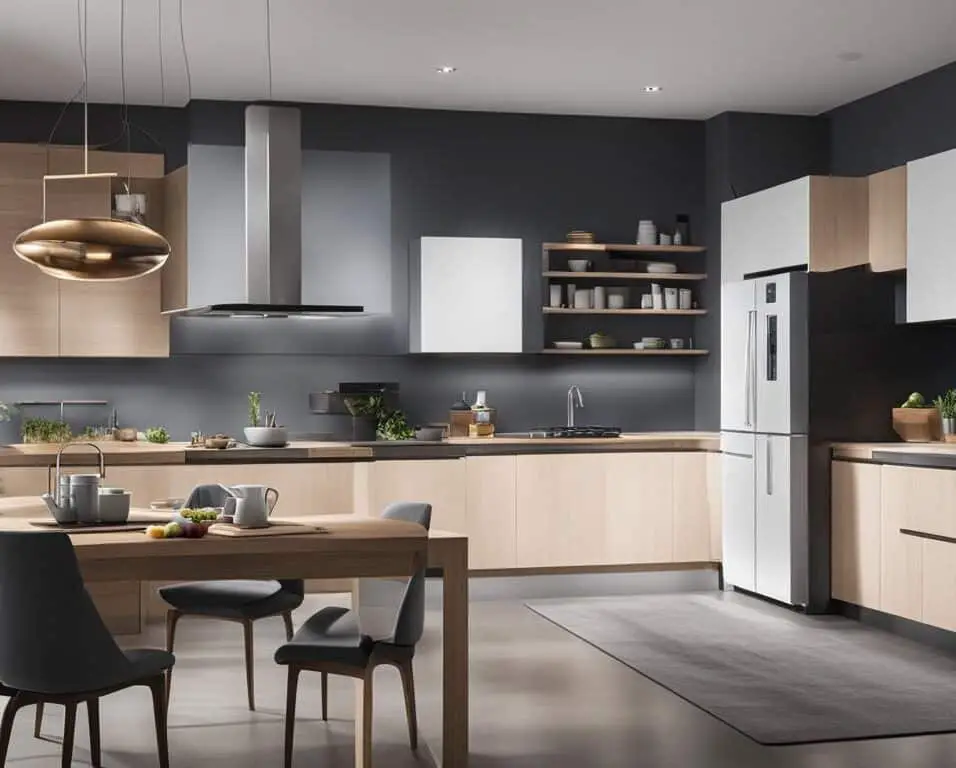IoT: The Backbone of Smart Home Automation
The Internet of Things (IoT) is revolutionizing the concept of smart home automation. With the integration of IoT devices, homeowners can experience seamless control and monitoring of various connected devices and appliances. The IoT serves as the backbone of these smart homes, connecting them to the internet and enabling the exchange of data between devices. This article explores the benefits, challenges, and future possibilities of integrating IoT devices for efficient smart home solutions.
Key Takeaways:
- The Internet of Things (IoT) is transforming smart home automation.
- IoT devices enable seamless control and monitoring of connected devices.
- Smart homes rely on the IoT to connect and exchange data between devices.
- Integrating IoT devices offers numerous benefits for homeowners.
- Challenges and concerns related to data privacy and compatibility need to be addressed.
The Evolution of Smart Home Technology
Smart home technology has undergone an incredible evolution over the years. While the concept of home automation can be traced back to the early 20th century, it wasn’t until the late 20th century and the emergence of personal computers that the idea of smart homes started to become a reality. With advancements in connectivity, sensors, and artificial intelligence, smart homes have transformed from a futuristic concept to a thriving industry.
Throughout history, visionaries and innovators have envisioned a world where homes are seamlessly connected and can be controlled with the touch of a button. The development of smart home technology can be attributed to their relentless pursuit of making life more convenient, efficient, and secure.
One key milestone in the evolution of smart home technology was the introduction of home automation systems in the 1970s. These early systems allowed homeowners to control basic household functions such as lighting, heating, and security through remote controllers. However, these systems were limited in their capabilities and were often expensive and complex to install.
It wasn’t until the 1990s that the advent of personal computers and the internet revolutionized the industry. The internet provided the means for people to connect devices in their homes, enabling greater control and automation. This marked a significant turning point in the evolution of smart home technology.
The evolution of smart homes gained further momentum with the proliferation of wireless technologies in the early 2000s. Wi-Fi and Bluetooth enabled seamless connectivity between devices, eliminating the need for complex wiring installations. This made smart home technology more accessible and affordable for a wider range of consumers.
Advancements in sensors and machine learning have also played a crucial role in shaping the evolution of smart home technology. Sensors can now detect motion, temperature, and even air quality, allowing homes to automatically adapt to the needs and preferences of the occupants. Machine learning algorithms enable smart homes to learn from user behavior and make intelligent predictions, further enhancing the automation and efficiency of these systems.
Today, smart home technology has become a mainstream reality. From voice-controlled virtual assistants to smart thermostats and security systems, there is a wide range of smart devices available to homeowners. These devices can be seamlessly integrated into existing homes, allowing for easy and intuitive control.
“The possibilities of integrating IoT devices for efficient smart home solutions are endless.”
The growth of the smart home industry has been fueled by the increasing demand for convenience, energy efficiency, and enhanced security. Homeowners are embracing smart home technology as it offers them the ability to remotely control and manage their homes, save energy, and enjoy peace of mind.
“The evolution of smart home technology has transformed houses into intelligent living spaces.”
The Benefits of Smart Home Technology
As smart home technology continues to evolve, it brings a multitude of benefits to homeowners. Some of the key advantages include:
- Convenience: Smart homes automate routine tasks and provide seamless control of devices, making daily life more convenient and efficient.
- Energy savings: Smart devices can be optimized for energy efficiency, reducing energy consumption and lowering utility bills.
- Enhanced security: Smart home security systems provide advanced monitoring and remote access, ensuring the safety of your home and loved ones.
- Peace of mind: With smart home technology, you can monitor and control your home from anywhere, giving you peace of mind even when you’re away.
“Smart homes offer a wealth of benefits that enhance our daily lives and transform the way we interact with our homes.”
Future Possibilities for Smart Homes
The evolution of smart home technology is far from over. The future holds even more exciting possibilities as advancements in AI, energy management, and integration with smart cities continue to shape the industry.
With the rise of artificial intelligence, smart homes will become even more intuitive and capable of adapting to our needs. Homes will learn from our behavior and make intelligent decisions to optimize comfort, efficiency, and security.
The integration of smart homes with smart cities will create a seamless ecosystem where homes, transportation, and public services work together to enhance our lives. Imagine a future where your home communicates with your car to manage energy usage or synchronizes with public transportation to ensure a smooth commute.
“The future of smart homes holds unlimited potential, promising a more connected, intelligent, and sustainable way of living.”
Key Components of a Smart Home
A smart home is made up of various components that work together harmoniously to create an interconnected and intelligent living environment. At the core of every smart home is a smart home hub. This powerful device serves as the central control center for all connected devices, allowing users to manage and monitor their smart home ecosystem with ease.
The smart home hub acts as a bridge, enabling seamless communication between different connected devices and appliances. It forms the foundation that brings together the entire smart home system and allows for efficient control and coordination of various functionalities.
Connected devices play a crucial role in transforming a regular home into a smart home. These devices encompass a wide range of appliances, such as smart lights, smart locks, smart thermostats, and more. They are equipped with sensors and connectivity, enabling them to interact with the smart home hub and respond to user commands or automated rules.
Smart lights, for example, can be controlled remotely from a mobile device, allowing users to adjust their brightness or color to create the desired ambiance. Smart locks provide enhanced security by allowing homeowners to lock or unlock their doors from anywhere, providing convenient access control and improved peace of mind.
Another essential component of a smart home is home security systems. These systems are designed to safeguard your property and loved ones through advanced surveillance and monitoring capabilities. With the integration of security cameras, motion sensors, and door/window sensors, homeowners can keep a watchful eye on their property and receive instant alerts in case of any suspicious activities.
By combining a smart home hub, connected devices, and home security systems, homeowners can experience the true potential of a smart home. With seamless control and automation, they can enhance their lifestyle, improve energy efficiency, and enjoy the convenience and peace of mind that comes with a fully integrated smart home ecosystem.
Benefits of Key Components in a Smart Home
The key components of a smart home bring a multitude of benefits to homeowners:
- Convenience: A smart home hub acts as a central control center, allowing users to manage all connected devices from a single interface, whether they’re at home or away.
- Energy Efficiency: Connected devices can be optimized for energy savings, with the ability to schedule or automate routines that conserve energy.
- Enhanced Security: Home security systems provide advanced surveillance and monitoring capabilities, offering peace of mind and ensuring the safety of your home and loved ones.
With these key components in place, homeowners can truly transform their living spaces into intelligent and connected homes.
| Component | Functionality |
|---|---|
| Smart Home Hub | Serves as the central control center for all connected devices, enabling seamless communication and management. |
| Connected Devices | Includes smart lights, smart locks, smart thermostats, and more, allowing remote control and automation of various functionalities. |
| Home Security Systems | Encompasses security cameras, motion sensors, and door/window sensors, providing advanced surveillance and peace of mind. |
Benefits and Advantages of Smart Homes
Smart homes offer a plethora of benefits and advantages that enhance our daily lives in remarkable ways. Let’s explore some of the key advantages:
Increased Convenience
One of the most significant advantages of smart homes is the convenience they bring. With the power of automation, routine tasks can be effortlessly streamlined. Imagine waking up to the smell of freshly brewed coffee as your smart coffee machine activates itself based on your customized schedule. Or arriving home to a perfectly illuminated space, with smart lights adjusting to your preferred lighting levels. Smart homes allow you to control various devices with ease, making your life more convenient and efficient.
Energy Savings
Smart homes contribute to energy savings, both for the environment and your wallet. Devices within a smart home are optimized for energy efficiency, helping to reduce unnecessary consumption. With connected systems, you can program energy-saving modes that automatically adjust temperature settings, turn off lights, or regulate appliance usage. By monitoring and managing energy consumption, smart homes promote sustainable living while saving you money on utility bills.
Enhanced Safety and Security
When it comes to safety and security, smart homes offer advanced features that bring peace of mind. With the ability to monitor and control security systems remotely, you can keep a close eye on your home even when you’re away. Receive real-time alerts on your smartphone if there is any unauthorized entry or suspicious activity. Smart locks offer keyless entry, ensuring that only authorized individuals can access your home. Enhance your safety with smart surveillance systems that provide 24/7 monitoring and recording capabilities. With smart homes, you can rest easy knowing that your property is protected.
Overall, the convenience, energy savings, and enhanced safety provided by smart homes make them a worthwhile investment. By embracing this groundbreaking technology, you can enjoy a more comfortable, efficient, and secure living environment.
| Benefits of Smart Homes | Advantages |
|---|---|
| Increased Convenience | Automated tasks and easy device control |
| Energy Savings | Optimized energy efficiency and programmed conservation |
| Enhanced Safety and Security | Remote monitoring and control, smart locks, and surveillance |
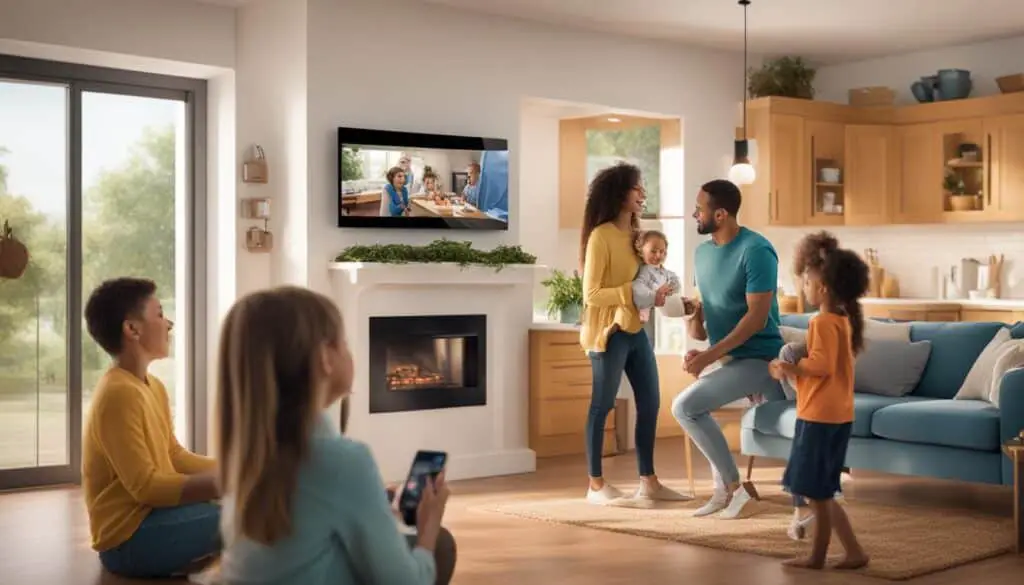
Challenges and Concerns in the Era of IoT
While smart homes offer a plethora of benefits, it is crucial to address the challenges and concerns that accompany this technology-driven era. Data privacy and security risks are prominent among these concerns, as smart homes heavily rely on the collection and exchange of personal data.
Ensuring data privacy in smart homes is crucial to protect sensitive information from unauthorized access. Homeowners must be proactive in implementing robust security measures, such as strong passwords and encryption protocols, to safeguard their data from potential cyber threats.
Moreover, compatibility and interoperability issues can arise when integrating different smart devices within a home ecosystem. As the market is flooded with various brands and technologies, ensuring seamless communication and compatibility between devices can be a complex task.
The Importance of Compatibility
Compatibility issues can hinder the functionality of a smart home, leading to a fragmented user experience. Homeowners may face challenges while attempting to integrate devices from different manufacturers, as not all devices are designed to work together seamlessly. It is crucial for manufacturers to establish industry standards and protocols, enabling users to mix and match devices without compatibility issues.
Additionally, setting up and integrating multiple devices in a smart home might require technical support and user-friendly interfaces. Many homeowners may lack the technical expertise necessary to troubleshoot issues or navigate complex installation procedures. Ensuring accessible and reliable technical support is essential to alleviate frustrations and enhance user experience.
By addressing data privacy concerns, promoting compatibility, and providing technical support, the smart home industry can instill confidence in users and foster a more seamless integration of connected devices.
“The ability to maintain data privacy and address compatibility challenges are crucial for the successful adoption and widespread acceptance of smart home technology.” – Smart Home Guru
While challenges persist, the benefits and possibilities of smart homes outweigh the concerns. By adopting robust security measures, promoting compatibility standards, and providing accessible technical support, the future of smart homes can be built on a foundation of trust and convenience.
| Data Privacy Concerns | Compatibility Challenges | Technical Support |
|---|---|---|
| Protecting sensitive information from unauthorized access | Integrating devices from different manufacturers | Assistance with installation and troubleshooting |
| Implementing security measures and encryption protocols | Ensuring seamless communication between devices | Accessible support for users lacking technical expertise |
| Promoting user awareness and education | Establishing industry standards and protocols | Enhancing user experience with user-friendly interfaces |
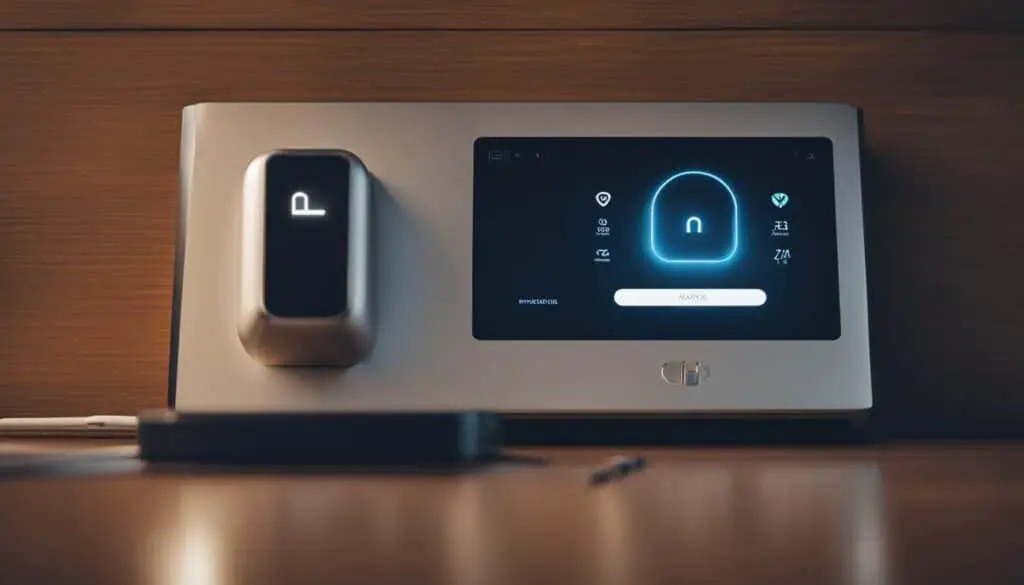
Impact of Smart Homes on Daily Living and Lifestyle
Smart homes have revolutionized daily living and lifestyle, offering a myriad of benefits that enhance convenience, health and wellness, and entertainment. Through automation, homeowners can streamline their routines and delegate mundane tasks to smart devices, freeing up time for more meaningful activities.
Automation Simplifies Daily Tasks
The integration of automation in smart homes simplifies daily tasks and routines, bringing ease and efficiency to homeowners’ lives. Tasks such as controlling lighting, adjusting thermostats, and managing appliances can be automated, effortlessly adapting to occupants’ preferences and schedules. With a simple command or preset schedule, smart homes can create a comfortable and personalized environment without manual intervention.
Promoting Health and Wellness
Smart technology contributes to improved health and wellness by seamlessly integrating devices that monitor activity levels and promote healthier habits. From fitness trackers to smart scales, these devices provide real-time data and insights, empowering individuals to make informed decisions about their well-being. Some smart home systems even offer features such as air quality monitoring and water filtration systems, ensuring a healthier living environment.
Revolutionizing Entertainment and Media Consumption
Entertainment takes on a whole new level in smart homes, providing access to a vast array of content and personalized media experiences. Integration with streaming platforms, smart TVs, and home theater systems allows effortless access to entertainment options. Voice-controlled assistants add an extra layer of convenience, enabling hands-free control over music, movies, and online content.
Furthermore, the integration of smart technology with home automation systems can create immersive experiences by synchronizing lighting, sound, and visual elements. Whether it’s hosting a movie night or setting the ambiance for a cozy evening, smart homes offer unparalleled entertainment possibilities.
“Smart homes bring a new level of convenience and enjoyment to our daily lives. From automating routine tasks to providing access to a world of entertainment, the impact of smart homes on daily living and lifestyle is undeniable.”
With the profound impact of smart homes on daily living, the integration of automation, health and wellness, and entertainment creates a holistic and enriching living experience.
| Benefits | Examples |
|---|---|
| Time-saving | Automated lighting and appliance control |
| Convenience | Voice-controlled entertainment systems |
| Improved well-being | Activity monitoring devices |
| Personalization | Customized media experiences |
Conclusion
The smart home revolution, fueled by the embracing of the Internet of Things (IoT), has ushered in a new era of convenience, efficiency, and connectivity. As homeowners, we now have the power to transform our living spaces into intelligent environments that enhance our daily lives. By integrating IoT devices and embracing smart home technology, we can experience a multitude of benefits.
One of the primary advantages of smart homes is the increased convenience they offer. With just a few taps on our smartphone or a simple voice command, we can control and automate various devices and systems within our homes. From adjusting the temperature and lighting to managing our home security, smart homes enable us to streamline routine tasks and simplify our lives.
In addition to convenience, smart homes also contribute to energy savings and environmental sustainability. By leveraging IoT technology, we can optimize energy usage and reduce wastage. Smart thermostats, for example, can intelligently adjust the temperature based on occupancy patterns, leading to significant energy savings over time. Through the integration of renewable energy sources and efficient appliances, smart homes play a crucial role in the quest for a greener future.
Enhanced safety is another key benefit of smart homes. With advanced security systems and remote monitoring capabilities, we can have peace of mind knowing that our homes and loved ones are protected. From video doorbells and surveillance cameras to smart locks and alarms, smart home technology provides an added layer of security that traditional homes cannot match.
As we look to the future, the possibilities for smart homes and IoT integration are limitless. Advancements in artificial intelligence will enable our homes to learn our preferences and adapt to our needs, creating personalized and intuitive experiences. Moreover, the integration of smart homes with smart cities will revolutionize the way we interact with our surroundings, making our cities more sustainable, efficient, and livable.
The smart home revolution is here, and it is transforming the way we live, work, and interact with our homes. By embracing the IoT and harnessing the power of smart home technology, we can create homes that are not only intelligent and connected but also enhance our quality of life. Let us embark on this journey and embrace the future of smart homes.
FAQ
What is the Internet of Things (IoT) and how does it relate to smart home automation?
The Internet of Things (IoT) refers to the network of connected devices that communicate and exchange data with each other. In the context of smart home automation, IoT serves as the backbone, connecting smart devices and enabling seamless control and monitoring of various connected appliances.
How has smart home technology evolved over the years?
Smart home technology has come a long way, evolving from a futuristic idea to a thriving industry. With advancements in connectivity, sensors, and artificial intelligence, smart homes have become a reality, transforming daily living and providing a more connected and intelligent living environment.
What are the key components of a smart home?
At the heart of every smart home is a smart home hub, which serves as the central control center for all connected devices. Connected devices and appliances, such as smart lights and smart locks, form the building blocks of a smart home. Additionally, home security and surveillance systems are essential components, providing enhanced safety and peace of mind.
What are the benefits and advantages of smart homes?
Smart homes offer increased convenience, allowing homeowners to automate routine tasks and control various devices with ease. They also contribute to energy savings, as devices can be optimized for efficiency and connected systems can be programmed to conserve energy. Enhanced safety and security are additional advantages, with the ability to monitor and control security systems remotely.
What challenges and concerns are associated with smart homes and IoT?
Data privacy and security risks are prominent concerns, as smart homes rely on the collection and exchange of personal data. Compatibility and interoperability issues can also pose challenges when integrating different smart devices. Additionally, setting up and integrating various devices may require technical support and user-friendly interfaces.
How do smart homes impact daily living and lifestyle?
Smart homes simplify daily tasks and routines through automation, allowing homeowners to focus on more important things. Smart technology can also contribute to improved health and wellness, with devices that monitor activity levels and promote healthier habits. Furthermore, smart homes revolutionize entertainment and media consumption, offering access to a vast array of content and personalized media experiences.
What is the future of smart homes and IoT?
The rise of smart homes and the integration of IoT devices are transforming the way we live and interact with our homes. Despite challenges and concerns, the benefits and possibilities of smart home technology are significant. By embracing the smart home revolution and harnessing the power of the IoT, homeowners can experience increased convenience, energy savings, enhanced safety, and a connected and intelligent living environment.



